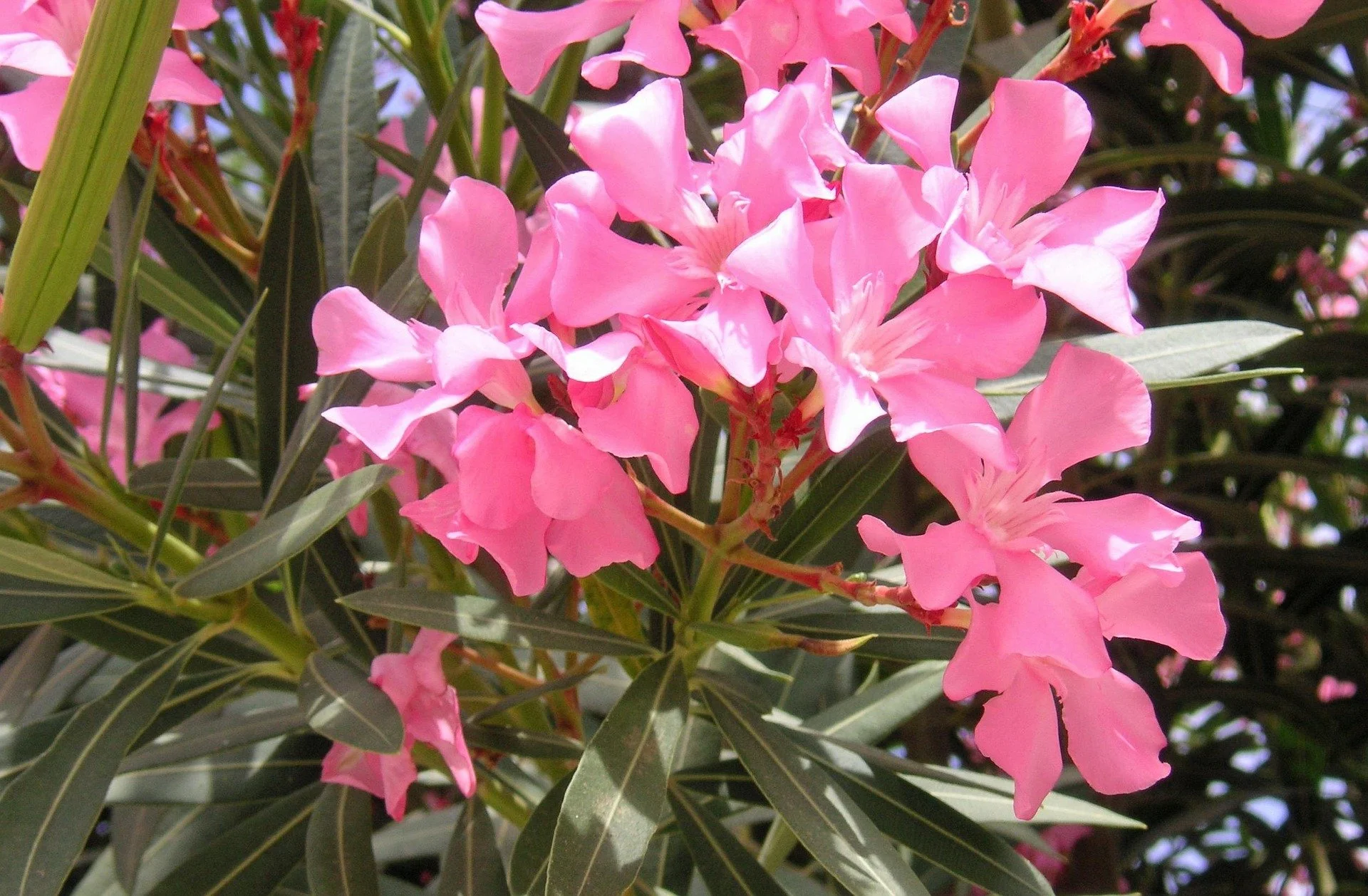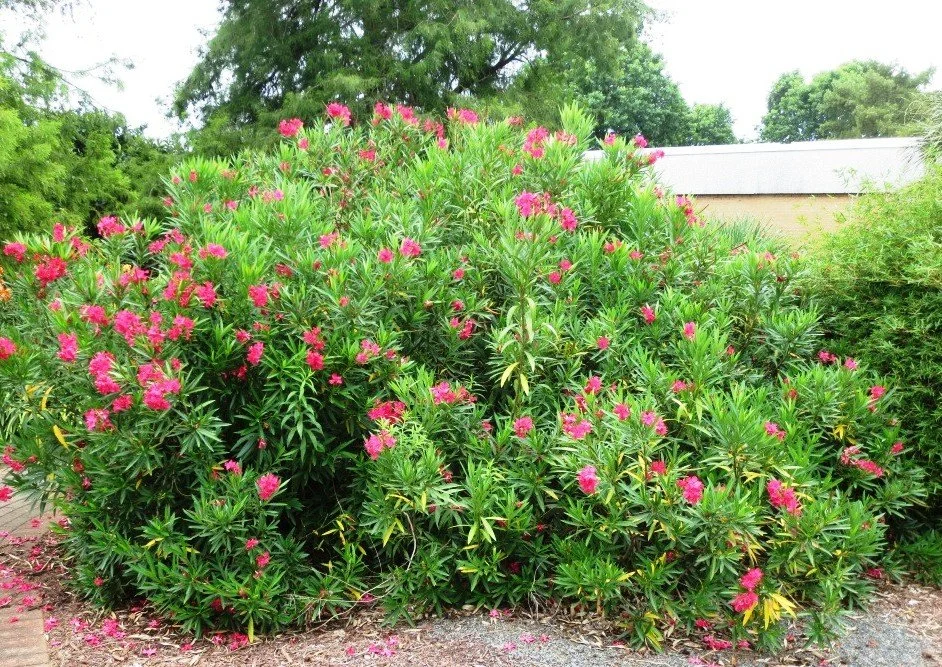I enjoy a shrub with beautiful flowers that occurs along the South Carolina coast. I had not seen it locally, so I assumed that it was tender and would not survive cold weather further inland. Recently, however, I saw this same shrub blooming in the upstate. A little research revealed that it was Oleander, Nerium oleander (NAIR-ee-um OH-lee-an-der). Like other members of the dogbane family, beautiful Oleander is highly toxic to humans, cats, dogs, and horses. Ingestion can be fatal. Deer avoid it.
Oleander is cold hardy in zones 8–10. Its narrow, leathery leaves are evergreen so it can be used for privacy hedging. It may lose leaves during severe cold snaps. While typically seen in sandy soil, Oleander will tolerate clay or silt. Salt breezes don’t bother it. It appreciates a fertile situation, so plan to fertilize if soil is lean. Mature shrubs will reach up to twenty feet in height and ten feet wide. Dwarf cultivars are available. Locate shrubs in full sun or mostly sun. Established plants are heat and drought tolerant.
Flowers are held in clusters, in pink, white, orange, red, or lavender shades. Blooms occur in late summer on new growth, so regular pruning keeps the shrub neat and encourages more flowering. Avoid contacting sap from trimmed limbs, as it can cause skin irritation. Do not burn pruned limbs, as even the smoke is toxic.
Greek mythology tells us that Oleander got its common name when Leander was taking his nightly swim across a river to visit his lover, Hero. She left a lamp in her window to provide guidance for his visit. Due to a wind storm, her lamp was blown out and Leander drowned. When his body was discovered, he was grasping one of these flowers. When Hero learned of his death, she mourned aloud, “O, Leander!” To finish this sad tale, the flower held in Leander’s dead hand fell to the ground where it sprouted roots and grew into a shrub, presumably Oleander.
This Oleander is in full flower in August, upstate South Carolina
A coastal planting of Oleander


